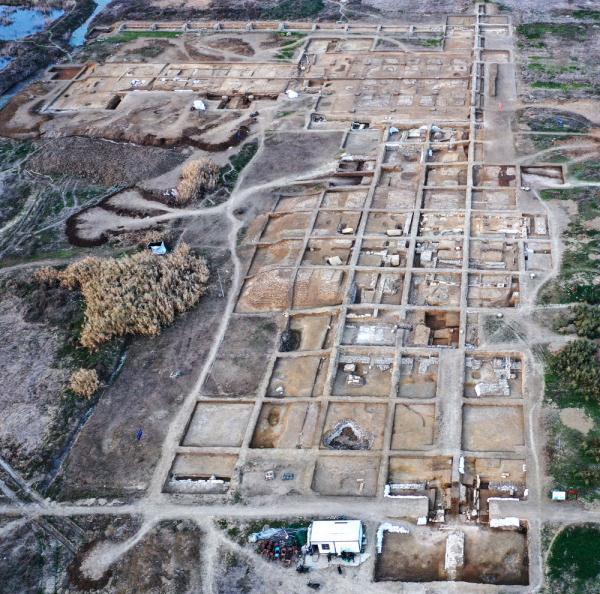Hefei, April 1,000 (Xinhua) -- The top ten new archaeological discoveries in China in 2021 were announced on March 31, and the site of Mingzhongdu in Fengyang, Anhui Province, was selected. Experts said that the excavation of the Ming and Zhongdu ruins clarified for the first time the layout of the palaces in the former dynasty area of the Ming and Zhongdu, filling many gaps in the archaeology of the Ming and Qing capital palaces.
Mingzhong is the capital city built by Ming Taizu Zhu Yuanzhang in Fengyang, Anhui, the city site is composed of triple city walls, an area of 50 square kilometers, the "Zhongdu Zhi" said that it was "the grandeur of regulation, the real crown of the world", but for various reasons it was abandoned before it was built, and the shape of the palace in its former dynasty district has been a mystery due to the unknown historical records.

Aerial view of the former palace area of the archaeological site of the Ming Zhongdu ruins. (Courtesy of Mingzhongdu Ruins Park Management Office)
The excavation clarified that the layout of the former dynasty palace of the Ming Dynasty was in the shape of a "worker", which was the structural form of the front and back halls plus corridors.
"In terms of palace form, the layout of the three halls of the Ming and Zhongdu palaces is different from that of the two palaces in Nanjing and Beijing, and is closer to the palace form of the Song and Yuan dynasties, which solves the speculation and controversy for more than 40 years." Wang Zhi, deputy research librarian of the Anhui Provincial Institute of Cultural Relics and Archaeology and leader of the archaeological excavation team in Fengyang Mingzhongdu, said.
Excavation site of the apse corridor area of the archaeological site of the Ming Zhongdu site. (Courtesy of Mingzhongdu Ruins Park Management Office)
Excavations have shown that the giant stone foundation excavated from the main hall of the former dynasty area of The Ming Dynasty is nearly 2.8 meters long, the base side is 2.5 meters to 2.6 meters long, and the raspberry diameter is 1.8 meters, which is the largest stone foundation for palace architecture seen so far. Archaeologists say that it is certain that the scale of the palace buildings of the former dynasty of the Ming and Zhongdu is very grand.
A loess platform with extremely pure soil was also found in the middle of the front hall of the palace base site, and archaeologists introduced that this loess platform is on the central axis, and the middle and backward position of the entire front hall should be the position where the dragon chair was placed.
A huge stone foundation excavated at the archaeological site of the Ming Zhongdu site. (Courtesy of Mingzhongdu Ruins Park Management Office)
According to historical records, When Zhu Yuanzhang first commanded the construction of Zhongdu, he recruited skilled craftsmen from all over the country, and archaeologists excavated a large number of brick, tile, and stone building components from the early Ming Dynasty, and the stone components included stone railings along the edge of the mantis, dragons, and phoenixes, and the components of the Sumire seat, etc., and the carvings were extremely exquisite.
"In the absence of excavation conditions at other city sites such as Nanjing and Beijing, this archaeological excavation for the first time fully revealed the architectural layout of the palaces in the pre-Ming and Qing dynasties, making up for the gap in the transformation of the palace system from the Song and Yuan dynasties to the Ming and Qing dynasties." Wang Zhi said that the archaeological excavation also confirmed the historical role of the Ming capital city in the planning of the ancient Chinese capital city, which was inherited from the Song and Yuan dynasties and the Ming and Qing dynasties. (Reporters: Liu Meizi, Liu Junxi, Zhang Duan, Cao Jiayue Participated in the writing: Guo Ruliang)
Source: Xinhua News Agency